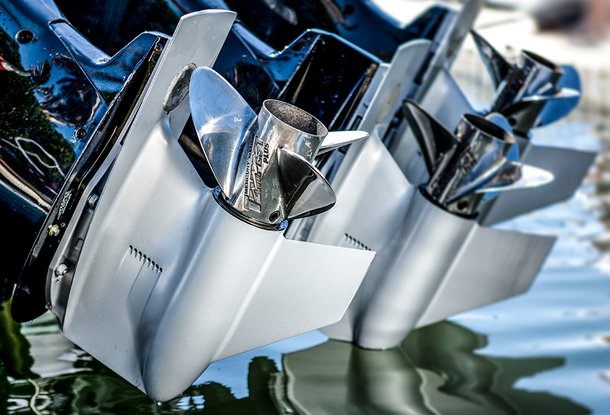
The propeller is a critical – yet often overlooked – part of virtually every boat you’ll ever encounter. After all, it’s the part of the propulsion system that turns the engine’s rotational motion into thrust, and it is the only component you can easily change that will modify the effective gear ratio of the system. Boaters choose to change propellers for a variety of reasons. No matter what kind of boat you drive, aspects such as changing water conditions, performance issues or an unplanned (and embarrassing) “depth check” can compel you to seek a new prop.
Fortunately, swapping out a propeller is far easier and faster than changing a flat tire on your car. All it takes is a few simple tools and the ability to follow the basic procedure outlined in this short yet detailed video. The steps are simple and intuitive. All you need to do is:
- Pry back the locking tabs of the lock-nut retainer.
- Remove the propeller using a prop wrench (and a wooden block to keep the prop from spinning).
- Lubricate the prop shaft and reinstall the thrust washer.
- Slide the new prop/hub assembly and the lock-nut retainer onto the prop shaft.
- Tighten the prop nut using your prop wrench and block. Consult your owner’s manual to find out exactly how much to torque it down.
- Use a screwdriver to bend the ears of the lock-nut retainer back into the locked position.
- Finally, give the prop a quick spin by hand to ensure that it can easily turn 360 degrees without binding, and you’re ready to get back on the water.
Intimidated or confused? Don’t be: the video at the base of this article clearly shows you how to perform each step.
Other points to consider:
- Spare your day: Getting stranded due to a damaged propeller or spun prop hub will ruin your day and threaten your safety. It’s a great idea to always carry a spare propeller and hub so you can turn the situation into a minor delay instead of a day spoiler. Many boaters opt to carry a basic aluminum propeller as a spare to save money. That’s perfectly fine, but you should also consider a prop of the same quality as your primary, but in a complementary configuration (4 vs. 3 blades, different diameter or pitch, etc.) that you know you might want to use from time to time. That means you’ll be carrying a spare and a different performance option, all in the same box.
- Avoid something fishy: When cleaning your boat or doing maintenance checks, look between the propeller and gearcase to see if any fishing line has gotten wrapped around the prop shaft. If you see any, remove the propeller and carefully cut away the line at your very first opportunity. If you don’t, it can ruin the propeller shaft seal, which can lead to a loss of gear oil and a sizable repair bill.
- It’s only a drill: At least once a year it’s a good idea to proactively remove the propeller, inspect everything, lubricate the prop shaft and hub splines, and reinstall and retorque the propeller. This fights corrosion and ensures you’ll be able to easily remove the propeller when necessary.
- Feeling sluggish? If your boat isn’t performing up to expectations, check your propeller(s). A damaged or ill-fitting prop – wrong diameter, pitch or style – can drastically impede all aspects of performance. In fact, a new high-quality, well-chosen propeller is often the cheapest and fastest way to make a boat run better. Consult your local Mercury Marine dealer or find a dealer for guidance. Many dealers carry test propellers so you can compare several before you buy


